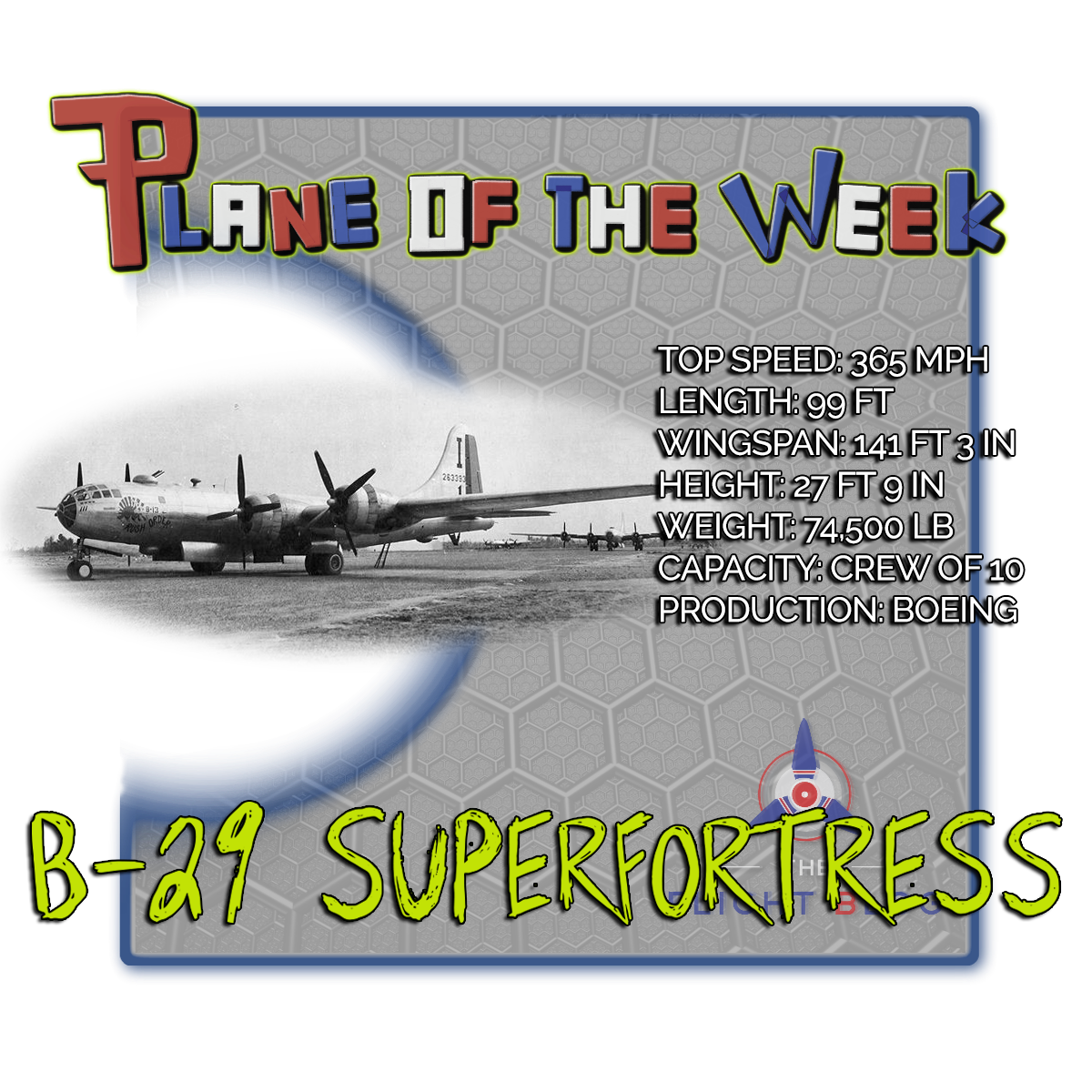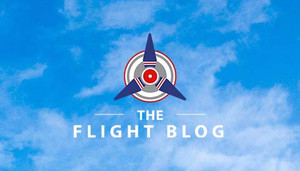Plane of the Week: Boeing B-29 Superfortresses
By on Apr 7th 2017
When you think of Boeing, you might think of large commercial jets, like the retiring 747, rather than their strategic bomber. But the Boeing B-29 Superfortress played an important role in the U.S. forces during WWII and the Korean War.
On April 7, 1945, the Superfortress made the first fighter escort mission against Japan. Today marks the 72nd anniversary of that mission.
Design and Development
The Superfortress was one of the largest aircraft used in WWII, and was one of the most expensive weapons that U.S. developed during the war. The naming of this aircraft (Superfortress) was meant to reflect and continue the Boeing B-17 Flying Fortress legacy.
This design introduced a few new innovations to fighter planes including pressurized cabins, two wheels, and a computer-controlled firing system.
The U.S. Army Air Corps requested that a pressurized long-range bomber be developed in 1938. In 1939, after Charles Lindbergh suggested the production of a new bomber to counter Nazi production, the Air Corps issued a formal specification for the -superbomber.-

The first B-29 was flown in 1944 and was developed from a Boeing C-97 Stratofreighter-the same plane that was used for the development of the Super Guppy Turbine.
Producing this aircraft was no easy feat. Four main-assembly factories were involved in the production. A total of 3,970 aircraft were produced; each costing just over $639,000 to produce. Production ceased in 1946.
War and Post-War Operations
It was designed to fill the high-altitude strategic bomber role, but it performed extremely well in low-altitude nighttime bombing missions. One of its last missions during World War II was the atomic bomb attacks on both Hiroshima and Nagasaki.
The Superfortress was one of the few WWII-era bombers to remain in service after the war. Some were used as flying television transmitters for the Stratovision, the airborne television transmission company.
They were also used for in-flight refueling purposes, rescue duty, and even for weather reconnaissance. The last B-29 squadron retired from service in 1960. Today, many B-29s are on display and only two have been restored to flying status.
Sources:
https://en.wikipedia.org/wiki/Boeing_B-29_Superfortress
http://www.boeing.com/history/products/b-29-superfortress.page
http://www.skytamer.com/April.html
http://www.defensemedianetwork.com/stories/very-long-range-p-51-mustang-missions-to-japan-taxed-pilots/






